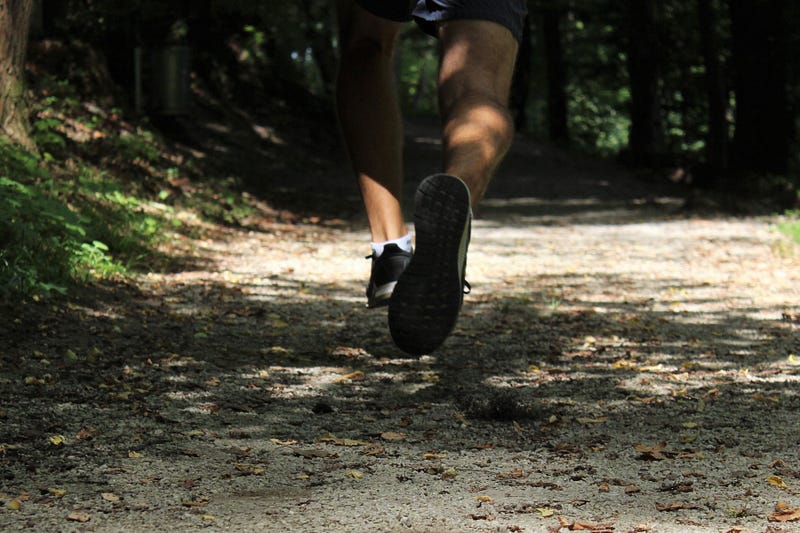Mastering Foam Rolling for Enhanced Running Performance
Written on
Understanding Foam Rolling for Runners
In recent years, foam rolling has surged in popularity, becoming a staple in fitness centers worldwide. However, with this rise in use has come a plethora of misinformation. While foam rolling can positively impact your performance and overall health, many are often misled about its true capabilities.
Today, we'll debunk a common myth surrounding foam rolling and explore straightforward strategies to maximize its benefits. Surprisingly, foam rolling is quite simple, yet many struggle due to misleading information circulating online. Mastering the proper techniques can significantly enhance your running and overall fitness.
Foam Rolling Basics for Runners
It's essential to recognize that foam rolling isn't a one-size-fits-all solution. If you’re experiencing overtraining, rolling may not be the best option for your muscles, which likely need rest. Furthermore, some injuries stem from imbalances elsewhere in the body. For instance, a spinal issue might lead to tightness in the hamstrings or calves. In such cases, addressing the root cause of the injury is more beneficial than simply rolling out tight muscles.
Now, let’s dive deeper into the main myth: the belief that foam rolling achieves self-myofascial release (SMR). Contrary to popular belief, it does not. Fascia, the connective tissue enveloping muscles and organs, can develop adhesions during physical activity. True myofascial release occurs when these layers can glide over one another, which is not achieved through foam rolling as it primarily compresses the tissue. Even if some movement were possible, there’s limited evidence suggesting it would lead to lasting changes in tissue.
Is Foam Rolling Worth It for Runners?
...absolutely.
Foam rolling serves as an excellent tool for warming up, particularly when combined with dynamic stretching and mobility exercises. Research shows a clear connection between rolling and a temporary increase in flexibility and functional range of motion, which can enhance athletic performance. Additionally, it effectively stimulates the nervous and cardiovascular systems, preparing your body for exertion. However, it's important to note that these effects stem from neural factors rather than biomechanical changes. Nonetheless, this makes foam rolling a valuable asset for preparing for running and related activities.
Foam rolling can also aid in cooling down and reducing delayed-onset muscle soreness (DOMS). While the exact mechanisms remain somewhat unclear, studies confirm that rolling decreases the discomfort associated with DOMS, which can linger for 24–72 hours post-workout. These benefits likely arise from a reduction in muscle tension and increased pliability following the application of pressure. Other factors, such as improved arterial function and parasympathetic activity, may contribute to recovery as well.
Moreover, foam rolling can provide temporary relief from acute pain through a process known as neural inhibition. This technique alters pain perception by disrupting the pain signals transmitted through the spinal cord, but the relief typically lasts for only about five minutes.
Effective Foam Rolling Techniques for Runners
If foam rolling can enhance your running and recovery, how should you do it properly? Here are five essential tips:
- Materials: Use a relatively firm foam roller or massage ball. Ideally, your roller should have minimal give, and your massage ball should be firmer than a tennis ball (lacrosse balls work well).
- Pressure: Apply pressure just below your pain threshold. Be cautious if you believe you have a high pain tolerance, as excessive pressure can lead to bruising. Always ease off if you experience significant discomfort.
- Location: Focus on rolling the muscle belly rather than bones, tendons, or ligaments, as these tissues respond differently.
- Pattern: There are two primary techniques: rolling along the entire muscle length or targeting specific painful areas. It may take time to find the best approach for your body, but a combination often proves effective.
- Time: For optimal results, spend 30 seconds to 1 minute rolling each muscle group.

In Summary,
Despite the misinformation surrounding foam rolling, it remains a potent tool for runners when used correctly. Focus on the five straightforward steps mentioned above—selecting the right equipment, applying appropriate pressure, targeting the right areas, using effective patterns, and timing your sessions—to enhance both your performance and recovery.
Don't let another day pass without incorporating foam rolling into your running routine!
In this video, you will find a comprehensive guide to full-body foam rolling exercises that can help improve your flexibility and reduce muscle soreness.
Learn how to effectively foam roll your lower back for better results with this instructional video that demonstrates proper techniques.